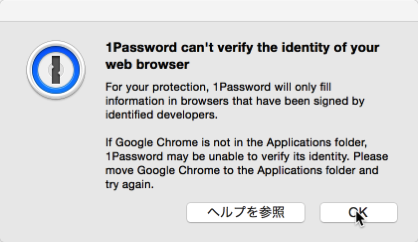- Homebrew will create a user with root privileges named by the current MacOS username. It has no password Since it has all privileges, just reset the root password with that user.
- 1password 301 302 403 404 a2hosting acl actions adobe afp airmail airport ajax alfred allergy amazon amex anti-virus apache apartment apartments apc api apple applecare applescript arrays articles ascii atm attributes automator avira awk background backup banking banks bash battery bbc bbedit berlitz binary blinds blog blogger blogger-templates.
- I need to install Homebrew. I am unable to input the password when prompted in the Terminal - nothing happens when I type, only when I hit enter. I follow the instructions specified in the book I'm.
Since Homebrew 1.0.0 most Homebrew users (those who haven’t run a dev-cmd or set HOMEBREWDEVELOPER=1 which is 99.9% based on analytics data). Twitter account or tweet it yourself and retweet it with the @MacHomebrew Twitter account (credentials are in 1Password). Homebrew-cask/Casks/1password-cli.rb /Jump toCode definitions. Go to definition R. Reitermarkus 1password-cli: switch to `verified` parameter. Latest commit 0cfd4f1 16 days ago History. 29 contributors.
In my previous guide we walked through installing and using Homebrew. Today we are going to look at extending Homebrew to support the installation of graphical applications. The kind you would normally drag to your Applications folder.

Homebrew Cask extends Homebrew. Bringing its simplicity and speed to the installation and management of GUI macOS applications such as Atom and Google Chrome.
To install an application or cask using Homebrew Cask you can run the following simple command:
An easy example that would install Spotify for example, is:
Homebrew 1password Download
To search for an application, do:
And finally, to remove an application:

Homebrew provides a nice little web page for finding applications that are available to be installed and you can access this on the Homebrew website.
Sometimes you may find it useful to be able to install a different version of an application, if you want a beta release or to run a previous version. 1Password 6 or Google Chrome Beta are good examples here.
We do this by using the Homebrew tap command to connect in another repository. We will be using the homebrew-cask-versions repository from GitHub.
And to install our specific version, we use this command:
Homebrew 1password Free
Install Homebrew
Paste that in a macOS Terminal or Linux shell prompt.
The script explains what it will do and then pauses before it does it. Read about other installation options.
What Does Homebrew Do?
Homebrew installs the stuff you need that Apple (or your Linux system) didn’t.
Homebrew installs packages to their own directory and then symlinks their files into
/usr/local.Homebrew won’t install files outside its prefix and you can place a Homebrew installation wherever you like.
It’s all Git and Ruby underneath, so hack away with the knowledge that you can easily revert your modifications and merge upstream updates.
Homebrew complements macOS (or your Linux system). Install your RubyGems with
gemand their dependencies withbrew.“To install, drag this icon…” no more. Homebrew Cask installs macOS apps, fonts and plugins and other non-open source software.
Donate to Homebrew
Homebrew Blog
Analytics Data
Homebrew was created by Max Howell. Website by Rémi Prévost, Mike McQuaid and Danielle Lalonde.
